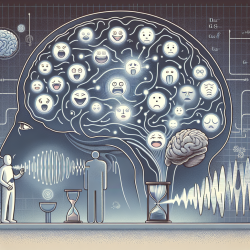Introduction to Emotional Prosody and Brain Function
Emotional prosody refers to the rhythm, stress, and intonation of speech that convey emotions. Understanding how our brains decode these vocal cues is crucial, especially for speech therapists working with children and adults with neurological conditions. Recent research sheds light on the roles of the basal ganglia and cerebellum in this complex process, particularly in individuals with Parkinson’s disease and cerebellar stroke.
Key Findings from Recent Research
The study, "Crossed functional specialization between the basal ganglia and cerebellum during vocal emotion decoding: Insights from stroke and Parkinson’s disease," explores how these brain structures process emotional prosody. The research involved 24 individuals with Parkinson’s disease, 24 with cerebellar stroke, and 24 healthy controls, examining how brain degeneration or lesions impact emotion recognition.
Key findings include:
- Hemispheric Specialization: Right-sided dysfunctions in both the basal ganglia and cerebellum resulted in greater deficits in emotional prosody recognition than left-sided ones.
- Progression Over Time: The study found that emotional recognition deficits worsen over time in patients with right-sided lesions, emphasizing the importance of early intervention.
- Complementary Roles: The basal ganglia and cerebellum have differential yet complementary roles in processing emotional prosody, with specific hemispheric specializations.
Implications for Speech Therapy Practitioners
For practitioners, these findings highlight the importance of considering the lateralization of brain lesions when assessing and treating emotional recognition deficits. Understanding the specific roles of the basal ganglia and cerebellum can guide more targeted interventions.
Here are some practical steps practitioners can take:
- Early Assessment: Regularly assess emotional prosody recognition in patients with known neurological conditions to identify deficits early.
- Targeted Therapy: Develop therapy plans that consider the hemispheric specialization of brain structures, focusing on exercises that enhance emotional recognition and expression.
- Continued Education: Stay informed about the latest research in neuroscience and speech pathology to refine therapeutic approaches continually.
Encouraging Further Research
While this study provides valuable insights, further research is needed to explore the intricate connections between the basal ganglia, cerebellum, and other brain regions involved in emotional processing. Practitioners are encouraged to contribute to or follow ongoing research efforts to enhance their practice and improve patient outcomes.
To read the original research paper, please follow this link: Crossed functional specialization between the basal ganglia and cerebellum during vocal emotion decoding: Insights from stroke and Parkinson’s disease.










